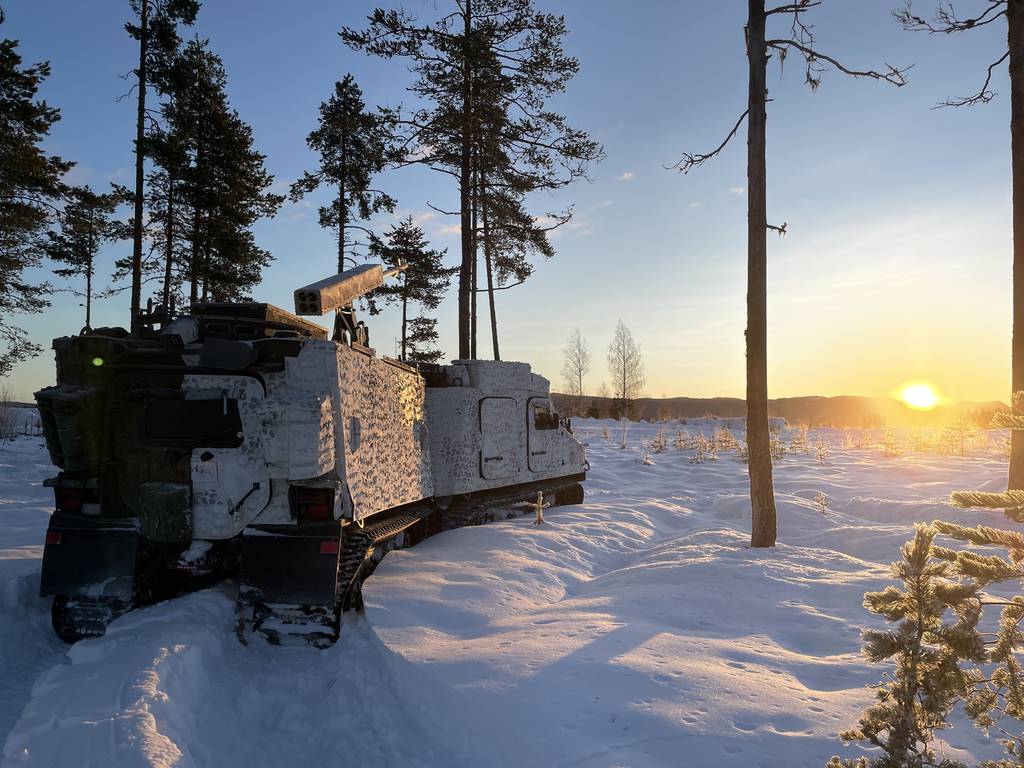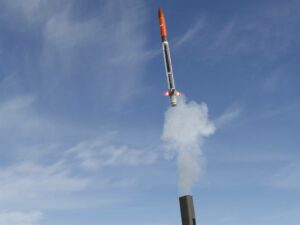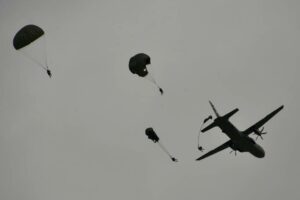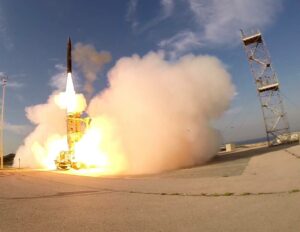
MILAN, Italy — Norwegian special operators staged the Arctic Warrior Experiment recently, inviting participants from eight countries to test their latest cold-weather gear in rugged terrain.
Modeled after similar experiments sponsored by U.S. Special Operations Command, the drill in late January assembled industry officials and military researchers under the banner “Remote effects delivery” in Arctic conditions – meaning, maximizing the combat utility of equipment while keeping a small footprint.
Torgeir Mørkved, research manager at the Norwegian Defense Research Establishment, one of the sponsoring organizations, told Defense News the theme was chosen because the stresses of the Arctic locale translate well into requirements for other areas of operations.
In attendance were a combination of military and industry members, a total of 50 companies represented, from the United States, U.K., Canada, Australia, New Zealand, Sweden, Denmark, and Finland.
Event organizers were especially interested in loitering munitions, from small hand-held to portable for a four-man team as well as unmanned vehicle platforms for all domains.
Nordic Drones CEO Pietari Sorri, a Finland-based participant, explains that one of the challenges of Arctic climate is that it “often makes it impossible, or at least very difficult, to transport large equipment, which is why our goal is to develop UAV systems that can be packed into a small space and are easily transportable while being high-performance.”
The company demonstrated its latest SkyDrone7 series, capable of flying for up to 74 minutes while carrying a 2.5-kilogram payload, as well as its new OW Striker UAV designed for shorter operations but with the ability to transport heavier cargo (maximum 4kg). Sorri says that the two models proved highly successful at the event and generated considerable interest.
In a similar fashion, Edge Autonomy responded to one of the key specifications listed by the Norwegian military: vertical take off and landing (VTOL) drones. The company’s single-operator VXE30 was developed to provide long-endurance imaging capabilities. It relies on either a solid oxide fuel cell, providing over 8 hours of endurance, or a rechargeable battery with 4 hours endurance.
Experiment organizers also had flagged as areas of interest the fields of battery and power supply in remote locations. On this, Sylvain Lhuissier, vice president of international operations at U.S.-based Bren-Tronics, says low temperatures impair battery components, resulting in reduced life cycle, performance and capacity.
The company displayed its tactical Light Universal Charger (LUC), which drew interest from participants for its innovative approach in allowing soldiers to recharge batteries while on mission through connection to a snowmobile battery or a fuel cell, Lhuissier said.
The experiment also called on manufacturers to present ideas for autonomous sensor operations and detection. For this category, Saab showcased its new passive electronic warfare sensor system, the Sirius Compact, in a stand-alone mast configuration. The system is able to detect, classify and prioritize radar as well as datalink signals without emitting signals of its own, which increases users’ situational awareness and early-warning capabilities.
Saab spokesman Conal Walker said the company’s focus for such systems is on low energy consumption, ease of use and ability to operate in all temperatures. “The Sirius Compact performed well in the cold environment, although we had wished for even colder weather during the test period,” he said.
BAE Systems Hägglunds was also among the participating companies, presenting the all-terrain BvS10 Protected Articulated Tracked Vehicle. “This specific vehicle was chosen due to its design for operations in the harshest and most remote environment,” said company spokesman Ola Thorén. “We successfully demonstrated its optimal maneuverability across varying terrains (snow, ice, rock as well as steep mountain forest environments), and the vehicle’s extreme mobility as well as modular design to be reconfigured for varying missions were found very interesting by attending countries,” he wrote in an email.
The vehicle found recent success in December 2022, when the U.K., Sweden and Germany signed an agreement to jointly procure 436 units, with deliveries beginning in 2024.
Elisabeth Gosselin-Malo is a Europe correspondent for Defense News. She covers a wide range of topics related to military procurement and international security, and specializes in reporting on the aviation sector. She is based in Milan, Italy.
- SEO Powered Content & PR Distribution. Get Amplified Today.
- Platoblockchain. Web3 Metaverse Intelligence. Knowledge Amplified. Access Here.
- Source: https://www.defensenews.com/global/europe/2023/02/09/norway-special-operators-field-pitches-on-fresh-arctic-capable-gear/
- 10
- 2022
- 2024
- 70
- a
- ability
- Able
- across
- After
- Agreement
- All
- Allowing
- Although
- among
- and
- approach
- arctic
- areas
- assembled
- attendance
- attending
- Australia
- autonomous
- aviation
- awareness
- banner
- based
- batteries
- battery
- because
- Beginning
- being
- called
- Canada
- capabilities
- capable
- Capacity
- Cargo
- carrying
- Category
- ceo
- challenges
- chosen
- Classify
- Climate
- combat
- combination
- Companies
- company
- Company’s
- components
- Configuration
- connection
- considerable
- consumption
- countries
- covers
- cycle
- December
- Defense
- Deliveries
- demonstrated
- Denmark
- Design
- designed
- Detection
- develop
- developed
- difficult
- domains
- Drones
- during
- ease of use
- easily
- Edge
- effects
- either
- Electronic
- energy
- Energy Consumption
- Environment
- environments
- equipment
- especially
- establishment
- Europe
- Even
- Event
- experiment
- Explains
- extreme
- Fashion
- field
- Fields
- Finland
- flagged
- flying
- Focus
- Footprint
- forest
- found
- fresh
- from
- Fuel
- Gear
- generated
- Germany
- goal
- high-performance
- highly
- HOURS
- HTTPS
- ICE
- ideas
- images
- Imaging
- impossible
- in
- Increases
- industry
- innovative
- interest
- interested
- interesting
- International
- inviting
- IT
- Italy
- January
- keeping
- Key
- landing
- large
- Late
- latest
- Life
- light
- Listed
- locations
- Low
- MAKES
- manager
- Manufacturers
- maximum
- meaning
- Members
- MILAN
- Military
- minutes
- Mission
- missions
- mobility
- models
- modular
- most
- Mountain
- New
- New Zealand
- news
- Norway
- Norwegian
- ONE
- operate
- Operations
- operators
- optimal
- organizations
- organizers
- Other
- own
- packed
- participants
- participating
- passive
- performance
- period
- pitches
- Platforms
- plato
- Plato Data Intelligence
- PlatoData
- power
- Power Supply
- present
- president
- Prioritize
- protected
- proved
- provide
- providing
- radar
- range
- recent
- recently
- Recharge
- Reduced
- related
- remote
- Reporting
- represented
- Requirements
- research
- researchers
- resulting
- Rock
- Said
- says
- sector
- security
- Series
- signals
- signed
- similar
- small
- snow
- solid
- Space
- special
- specializes
- specific
- specifications
- Sponsored
- sponsoring
- States
- success
- successful
- Successfully
- such
- supply
- Sweden
- system
- Systems
- tactical
- Take
- team
- test
- The
- their
- theme
- Through
- to
- Topics
- Total
- translate
- transport
- U.K.
- u.s.
- UAV
- under
- United
- United States
- units
- Universal
- use
- utility
- vehicle
- Vice President
- Weather
- which
- while
- wide
- Wide range
- without
- Zealand
- zephyrnet












